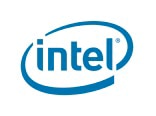July 16, 2018
Article
3 min
5 Enterprise RFID Success Stories
Developing a digital transformation strategy? Look at these businesses to see where radio frequency identification fits in.

Here are five examples of how CDW clients are using RFID and the benefits they’re achieving:
- One U.S. manufacturer wanted to always know the location and status of its forklifts, which are expensive assets where availability and uptime directly affect productivity. It also wanted to be able to track the location and status of the forklifts’ batteries and chargers. CDW brought in several partners to show the company its options for tracking the equipment in real time, as well as setting alerts for events. The project was so successful that the company now wants to pilot it and expand the solution to all 13 of its facilities across the Southeast over time.
- A conveyor belt manufacturer with 12 massive facilities worldwide wanted real-time visibility into the status of inventory and custom orders. The pilot project at its Atlanta facility used roughly 20,000 RFID tags and sensors. Those insights save the company money by avoiding excess inventory and maximizing customer satisfaction by providing real-time status updates on the manufacturing and shipping of custom orders. By automating that tracking, RFID also minimizes paperwork, freeing employees to focus on other tasks.
- A major U.S. military contractor was losing track of about 500 tools a month. RFID tags make it easy to keep tabs on them, eliminating the expense of replacements and ensuring that employees always have what they need to do their jobs. The company also uses RFID to locate and contact employees so they always know exactly when and where they’re needed in the workflow. This function helped to shrink project windows from 24 to 18 months, saving millions in the process.
- A manufacturer of doors for storage facilities ships about 60 to 70 loads per day via contract trucks. Doors were often not making it to customers because the drivers were selling them to unscrupulous contractors. Customer satisfaction suffered, and the company lost millions annually making and shipping replacements. With an RFID tag on each pallet, the company now can track each shipment in real time. Another benefit is being able to provide customers with updated arrival times. When each shipment is delivered, the contract driver removes the tags and sends them back to the manufacturer via FedEx.
- A company that operates cafeterias for businesses, schools, colleges and prisons wanted to be able to closely track its food. RFID enables it to track containers of both food and waste, such as banana peels. By comparing the weights of each tagged container, the company now can closely monitor metrics, such as spoilage and theft, for an annual savings of $8 million to $10 million.
Consider these wins when developing your own RFID-powered digital transformation strategy, and work with a partner that understands your business challenges and priorities and can orchestrate a solution that meets your needs.
Learn more about CDW’s Digital Transformation solutions and services.

